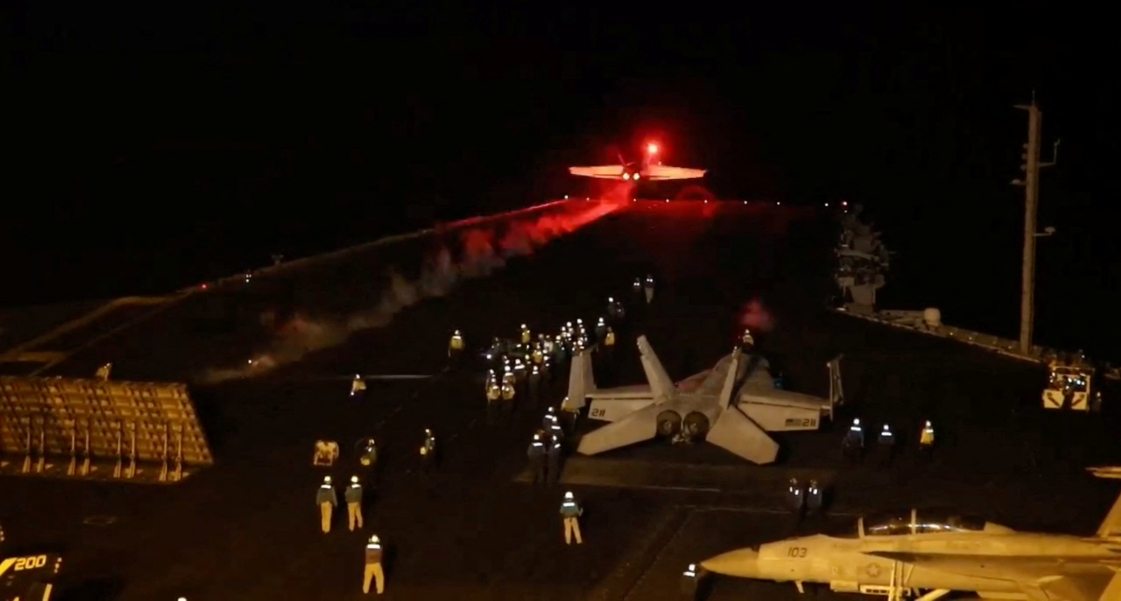Escalating Conflict: U.S. Airstrikes in Yemen Kill 8, Raising Fears of Wider War as tensions surge across the Middle East, threatening to spiral into a broader regional crisis that could impact global stability.
Why Did the U.S. Launch Airstrikes in Yemen?
The recent U.S. airstrikes in Yemen were a direct response to increasing Houthi rebel attacks targeting commercial shipping in the Red Sea. The Pentagon reported that eight individuals were killed in a precision attack on military facilities controlled by Houthi militants.

U.S. officials emphasized that these actions were necessary to protect international trade routes and deter further aggression. However, concerns over collateral damage and regional destabilization continue to grow.
Key Drivers of the Airstrikes:
| Reason | Details |
|---|---|
| Protection of Global Trade | 10% of world trade passes through the Red Sea. |
| Houthi Aggression | Rising drone and missile attacks on shipping vessels. |
| Deterrence Strategy | Aimed at limiting Houthi military capabilities. |
| Regional Stability Concern | Prevent escalation affecting Saudi Arabia, Israel, and Iran. |
How These Airstrikes Affect Yemen’s Already Fragile Situation
Yemen was already enduring one of the world’s worst humanitarian crises before the latest escalation.
The new U.S. strikes risk exacerbating suffering among civilians, many of whom live in war-torn regions with limited access to basic necessities.
According to U.N. reports:
- Over 24 million Yemenis (about 80% of the population) need humanitarian assistance.
- 4.5 million people remain internally displaced.
- Nearly 400,000 children are at risk of severe acute malnutrition.
Adding military pressure on such a fragile society could lead to:
- Further displacement.
- Increased famine conditions.
- Disrupted international humanitarian aid deliveries.
Strategic Importance: Why the Red Sea Matters Globally
One reason the U.S. responded strongly is the strategic importance of the Red Sea for global commerce and security.
Red Sea’s Global Impact Map:
| Strategic Element | Importance |
|---|---|
| Bab el-Mandeb Strait | Links the Red Sea to the Gulf of Aden, vital for oil shipping. |
| Suez Canal Connection | Handles 30% of the world’s container traffic. |
| Energy Supply Lines | 10% of global oil shipments pass through the Red Sea. |
| Global Food Supplies | Key route for grain exports from Ukraine and Russia. |
Any prolonged disruption would skyrocket global shipping costs, energy prices, and food inflation, causing ripple effects worldwide, including in the U.S.
Civilian Casualties and International Reaction to the U.S. Airstrikes
The immediate aftermath of the airstrikes saw a mix of U.S. government justifications and international humanitarian outrage.
- The Pentagon claimed that the strikes were “surgical” and minimized civilian casualties.
- The Red Cross reported civilian deaths, including two children among the eight killed.
- United Nations officials called for restraint and emphasized that military solutions will not solve the Yemen conflict.
Meanwhile, Iran denounced the strikes and warned of “serious consequences,” hinting at possible escalation through its regional proxy networks.
Global Reactions Summary:
| Country/Organization | Response Type |
|---|---|
| United Nations | Urged de-escalation and diplomatic talks. |
| Iran | Condemned U.S. “aggression” and threatened retaliation. |
| European Union | Expressed concern over civilian casualties. |
| Saudi Arabia | Supported targeting of Houthi military assets. |
Could This Escalation Lead to a Broader Regional War?
The greatest fear among analysts is that the current airstrikes could ignite a larger Middle Eastern conflict.
Indicators suggesting a broader war risk:
- Increased U.S. naval deployment to the Red Sea and Persian Gulf.
- Iran’s support for Houthi rebels intensifying.
- Saudi Arabia mobilizing additional border security forces.
- Israel’s intelligence agencies monitoring Houthi movements closely.
If the conflict expands:
- Global oil prices could spike significantly.
- Refugee flows into neighboring countries would intensify.
- Terrorist activities could find fertile ground in lawless regions.
What Needs to Happen Next: Diplomacy Over Escalation
There is still hope for diplomacy.
The U.N. Special Envoy for Yemen, Hans Grundberg, is leading emergency efforts to broker a ceasefire and bring involved parties back to the negotiation table.
Ongoing backchannel communications between:
- U.S.
- Saudi Arabia
- Oman
- Iran
are critical to averting a full-scale war.
Experts suggest:
- A temporary maritime ceasefire agreement to allow commercial shipping to resume safely.
- Increased humanitarian aid funding from the U.S., E.U., and Gulf States.
- Confidence-building measures like prisoner exchanges and lifting some port blockades.
Map for Easy Understanding
Here’s a simple Map for better clarity:
U.S. Airstrikes in Yemen
|
|--- Reason: Protect Global Trade
|--- Impact: Civilian Casualties
|--- Strategic Area: Red Sea Importance
|--- Global Reactions: U.N., Iran, Saudi Arabia
|--- Future Risks: Wider Regional War
|--- Solution: Urgent Diplomatic Efforts
Conclusion: What This Means for the Future of U.S. Foreign Policy
The U.S. airstrikes in Yemen represent a critical flashpoint in Middle Eastern geopolitics. Balancing the protection of global interests with humanitarian concerns remains a difficult task.
If the situation escalates unchecked, the Middle East could plunge into its largest regional war in decades, dragging the U.S. deeper into costly conflicts abroad.
Diplomacy must urgently be prioritized over military escalation.
[USnewsSphere.com / ap.]





